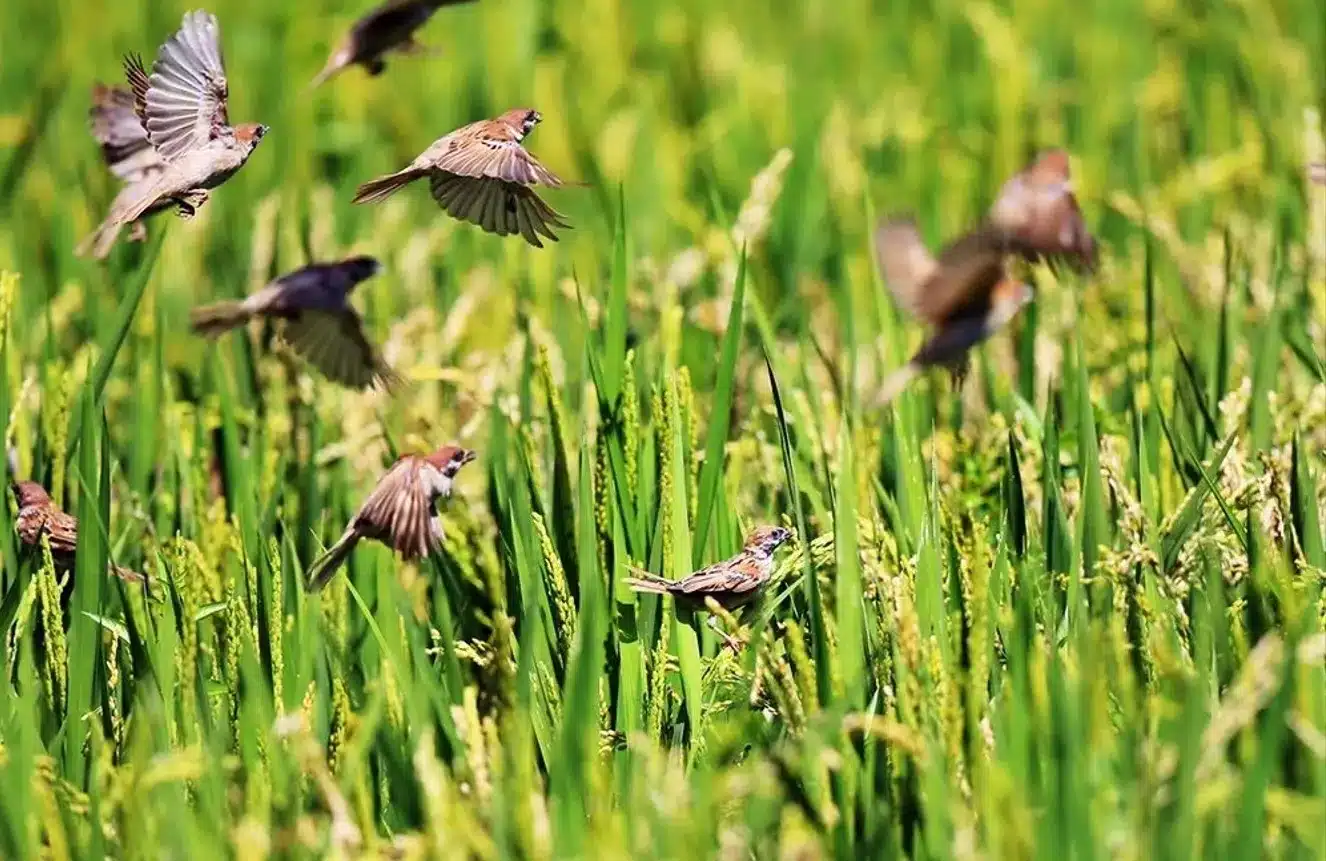In Africa, keeping rice fields safe from birds is especially hard during the dry season. With little natural food available, many migrating birds stay in grain fields longer, looking for their next meal. In places like Sierra Leone, Nigeria, and Ghana, birds become a big threat to rice at all stages of growth. They can cause serious economic losses and even lead to social problems.
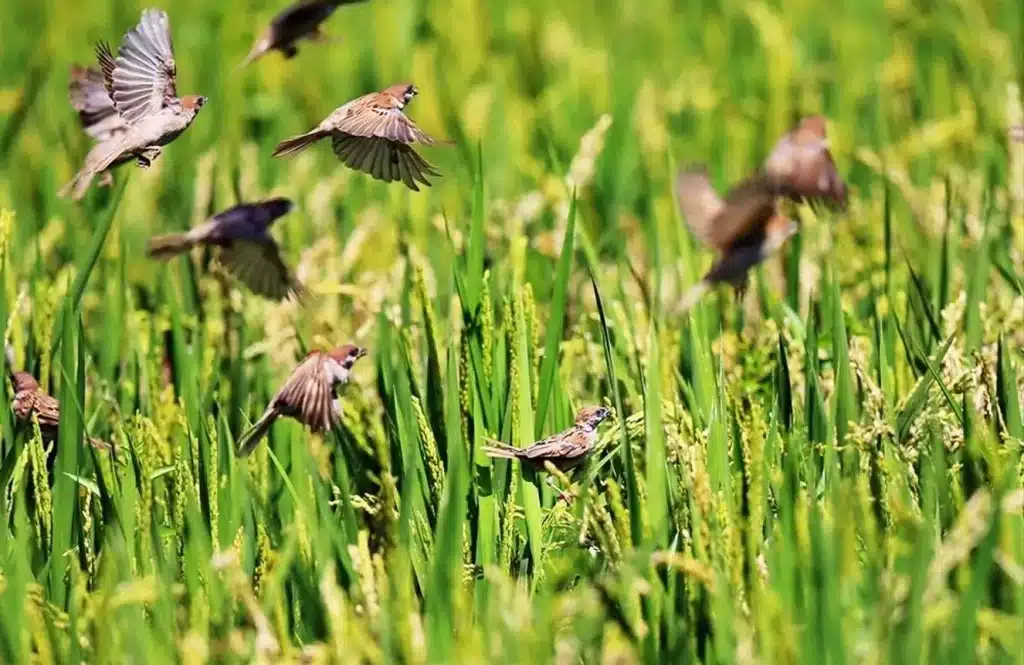
So many birds attract African farms
For instance, in Ghana, bird damage has led to more students missing school, women unable to leave home for work, and farmers missing out on family and community gatherings. To address this, it’s vital to develop effective strategies to fend off bird attacks on rice fields. This article will introduce 10 methods to prevent bird damage, giving you practical advice. But first, let’s dig into why birds go after rice fields, to better tackle the issue.
Background: Why Birds Attack Rice Fields?
In Africa’s rice fields, seven bird types cause much trouble for rice crops. These include the Spur-winged Goose, Knob-billed Goose, Village Weaver, Black-headed Weaver, Red-billed Quelea, Red-headed Quelea, and Golden Sparrow. They like to group together and can quickly destroy big parts of rice fields. For example, with its huge numbers and appetite, the Quelea can eat up to 50 tons of grains in Tanzania in just one day.
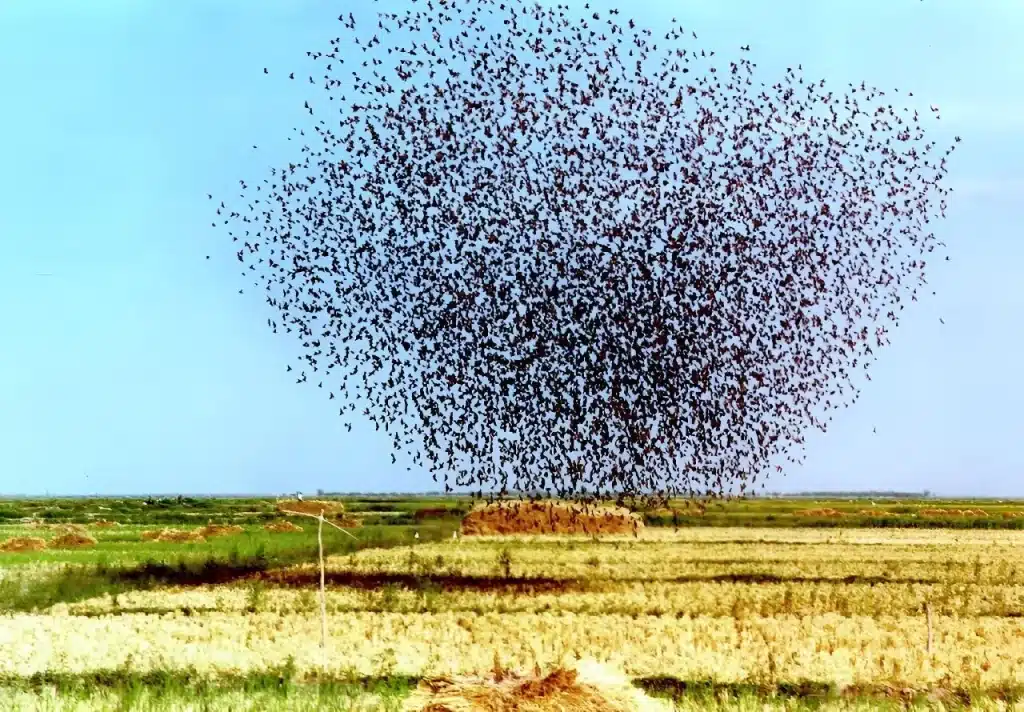
Quelea birds move in large flocks
These birds are also very smart and can adapt well. The Golden Sparrow, for instance, uses its small size to get deep into rice fields, making it hard for farmers to keep them away.
They harm rice crops in two main ways. First, they eat the rice grains, reducing the harvest. Second, they damage the rice plants while looking for food, making the grains fall off too soon or get ruined. This leads to more loss in farming. So, it’s important to know how these birds behave and the trouble they cause in rice fields. This helps in making good plans to keep them away.
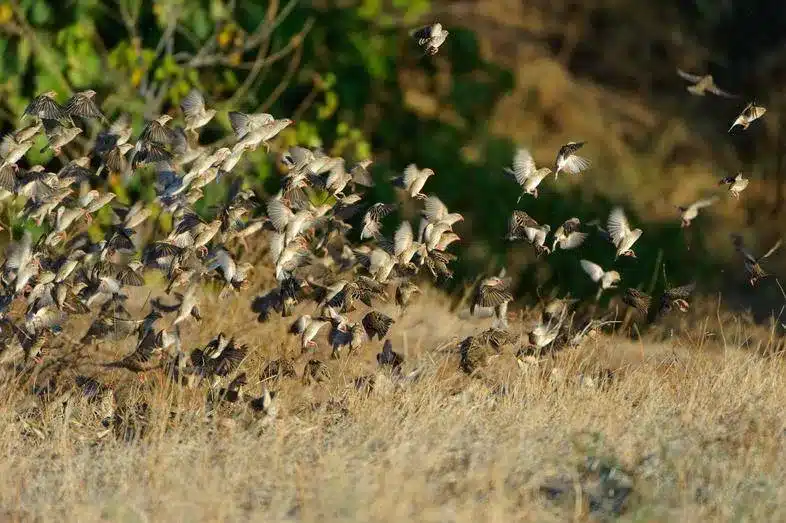
Red-billed quelea is the most damaging pest of crops in Africa
How to Protect Rice Fields from Bird Attacks
We look at three key areas to keep rice fields safe from birds: steps to prevent attacks, old-school methods to scare birds, and new technologies to keep them away. This mix of strategies can really shield your farmland from bird invasions.
1. Bird Netting
Bird nets work well to stop birds from harming your crops. These strong but light nets let the rice get all the sunlight and water it needs while keeping birds out. Though they’re great at their job, using these nets to cover large rice farms might be expensive. Also, good birds may sometimes get caught in these nets, which is something to watch out for.
Got to: Buy farm bird netting from China >>
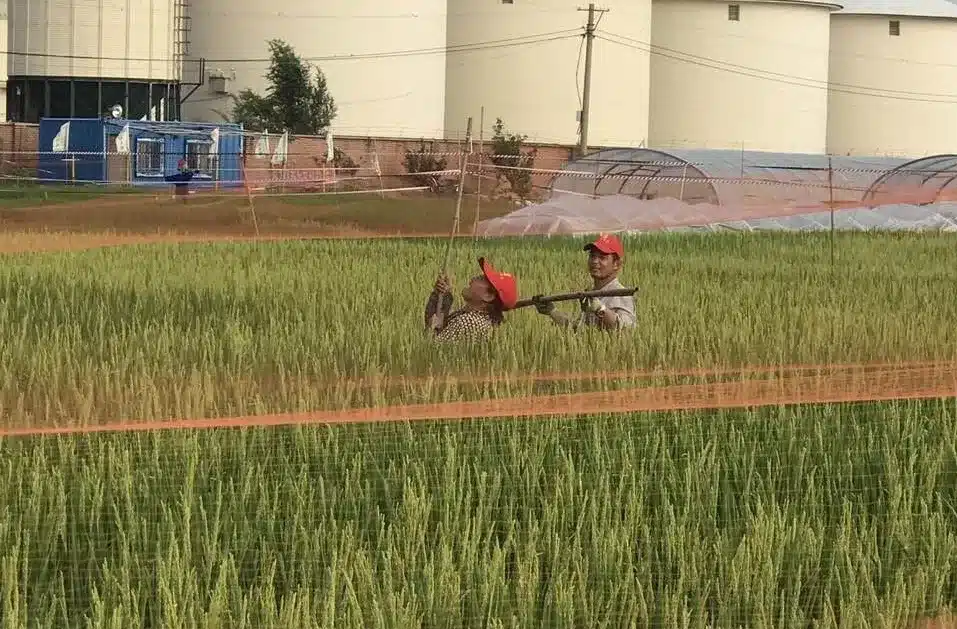
Bird nets used in rice farms
2. Scarecrows
Placing scarecrows in fields is an ancient way to scare birds. These straw figures look like people, tricking birds into thinking someone is there. This simple trick can work, but not for long. Birds soon learn that scarecrows aren’t a real danger.
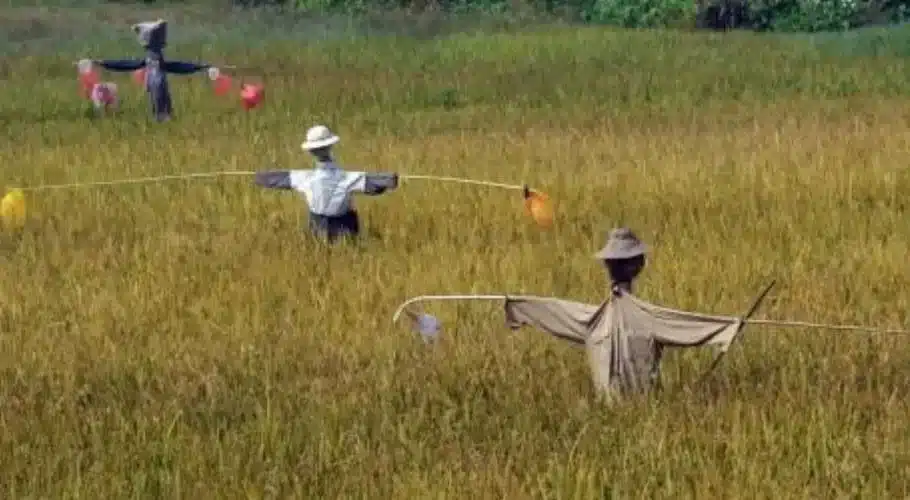
Scarecrows
3. Noise Makers
Using devices that make sudden, loud sounds can frighten and chase away birds. These sounds might come from special firecrackers, gun sound simulators, or similar devices. To really work, the noise should be ongoing and varied. Birds struggle more to get used to and overlook these sounds. If the noise stays the same, birds might learn it’s safe and stop being scared.

Beer bottles used to anti birds
4. Flags
Putting flags around rice fields can help keep birds away. The movement of these colorful flags disturbs the birds, making them look for calmer spots.
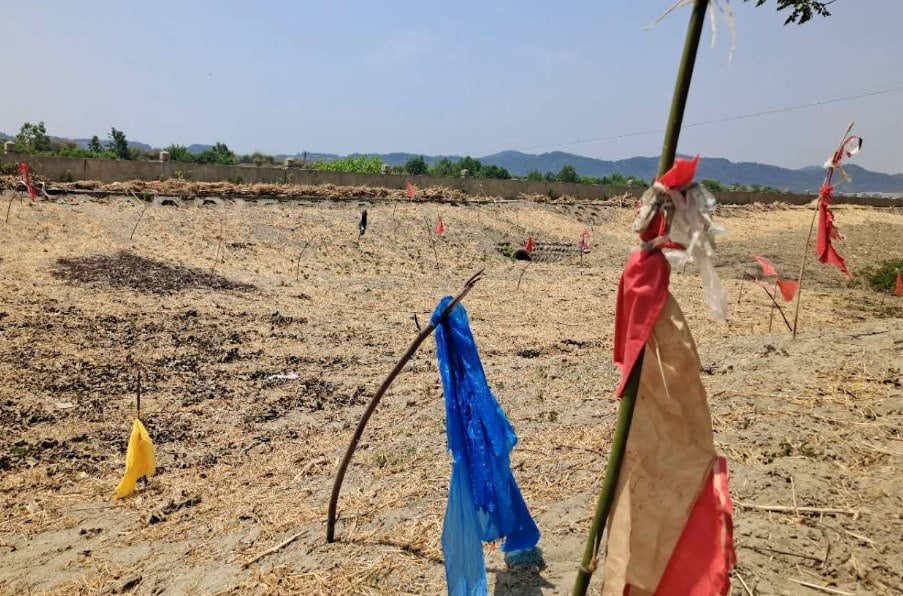
Cloth strips for anti-birds
5. Kites
Kites, designed to look like raptors or other birds, fly high in the sky. Their realistic movements and looks keep birds away from the fields. But, if birds get used to these kites, they might start ignoring them and come back.
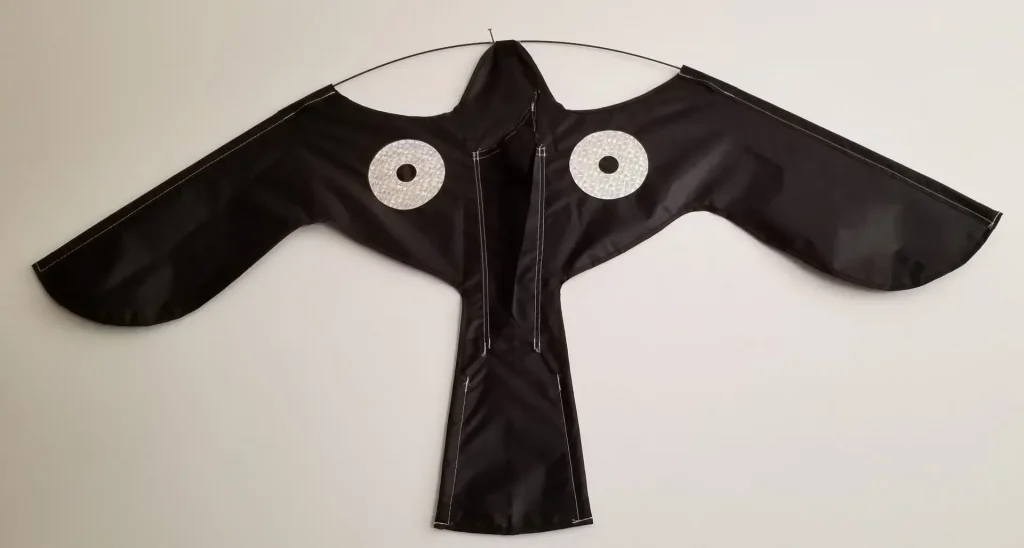
Kites
6. Bird Repellents
Bird repellents deter birds with specific tastes and smells. They emit a scent that bothers birds’ nerves and breathing. Birds remember this smell and stay away after encountering it. Repellents are getting more popular. Yet, using them is not a one-off task. You might need to apply them to a rice field more than twice a season.

Bird Repellent
7. Reflective Strips
Using reflective objects in the field takes advantage of light reflection. These objects flicker in the sunlight and scare birds away. This approach is easy on the budget but needs frequent tweaks to stay effective. For instance, hanging old cassette tapes on stakes works well. They flutter in the wind and make a soft noise, similar to predators’ sounds. Yet, if these reflections and noises become too repetitive, they might lose their power to keep birds at bay.

Reflective strips for birds
8. Ultrasonic Bird Repellers
Ultrasonic bird repellers send sound waves that humans can hardly hear but bother birds. This method is good for the environment and doesn’t interfere with people’s lives. Yet, if birds figure out the sound poses no real danger, they might get used to it and not be scared anymore.

Bird Deterrent for farming
9. Drones
Drones act as bird deterrents by copying the flight patterns of predators like raptors, scaring birds naturally. Flying regularly over fields, drones keep birds away and check on crop growth, offering a modern, multi-use solution. Though drones are getting popular in farming, they might be restricted in some places and can be expensive. Buying a drone depends on your specific situation.
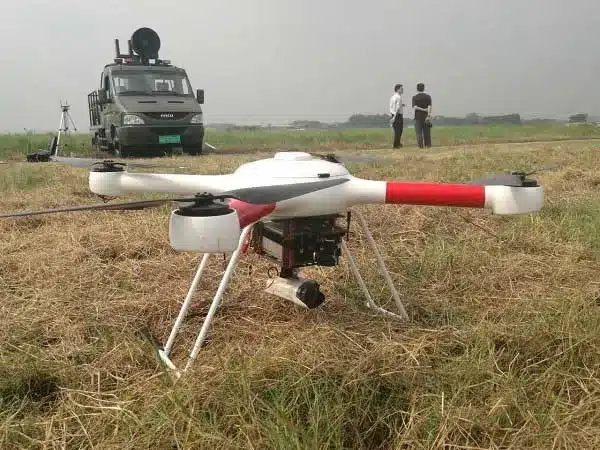
Drones
10. Laser Bird Repellers
These devices use green lasers to scare birds away. Birds see the laser not just as light but as a physical barrier. Their natural reaction is to avoid this “barrier.” Yet, birds might get used to laser repellers, especially if used too much or repetitively. You might need to change how or when you use the laser for the best results. Also, weather like fog or rain can lower the laser’s effectiveness.

Laser Bird Repellers
Every method to keep birds away has its pros and cons. Choosing the right one depends on your situation and what’s most cost-effective. Often, mixing several methods works best to keep birds at bay.
Conclusion
To wrap up, we’ve looked at ten ways to keep African rice fields safe from birds. We stressed how important it is to use a mix of management tactics. Just one method might not work well forever. However, mixing different strategies can make keeping birds away more successful.
For instance, you can use physical barriers, sound and light tricks, blending old-school techniques with new tech, and plan carefully. By doing this, we think you’ll find methods that are effective and kind to the environment for guarding your rice fields against birds.
